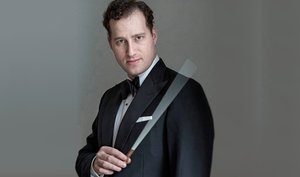WAGNER Tristan and Isolde – Prologue and Isolde’s Love-Death
MENDELSSOHN Piano Concerto No. 1 in G minor, op. 25
---interval---
BEETHOVEN Symphony No. 3 in E-flat major (‘Eroica’), op. 55
Featuring: Fülöp Ránki piano
Conductor: Nikolaj Znaider

This concert offers a virtually representative setting of 19th century German music history, which although running in reverse order still spans Beethoven to Wagner. “…from the most timid confession and tender attraction to anxious longing, hope and apprehension, complaints and desires, rapture and torment and, finally, to the most powerful impulse […] that might open a way for the inexhaustible craving heart to enter the sea of love’s endless delight.” This is how Wagner characterized the prelude of Tristan, the concert hall performance of which is often linked by Isolde’s Love-Death. Just like Tristan, so Mendelssohn’s Piano Concerto No. 1 (composed at the age of 22) similarly premiered in Munch, also in the presence of the king of Bavaria. At just 24, the astoundingly gifted Fülöp Ránki takes on the role of soloist for the three interconnected movements of the concerto. The conductor is Nikolaj Znaider who, although one of the busiest star violinists in the world, has over the past few years increasingly turned his attention to wielding the conductor’s baton. In the second half of the recital we find out how Eroica, which has played a key part in the concert repertoire for a good 200 years, sounds under the direction of the virtuoso musician.
